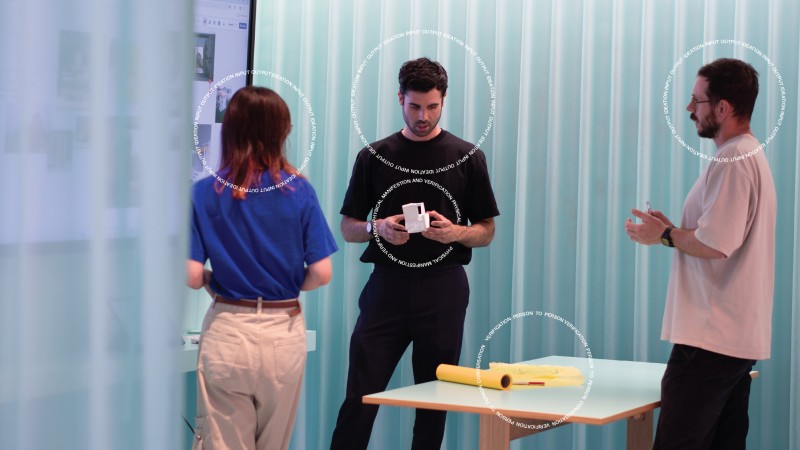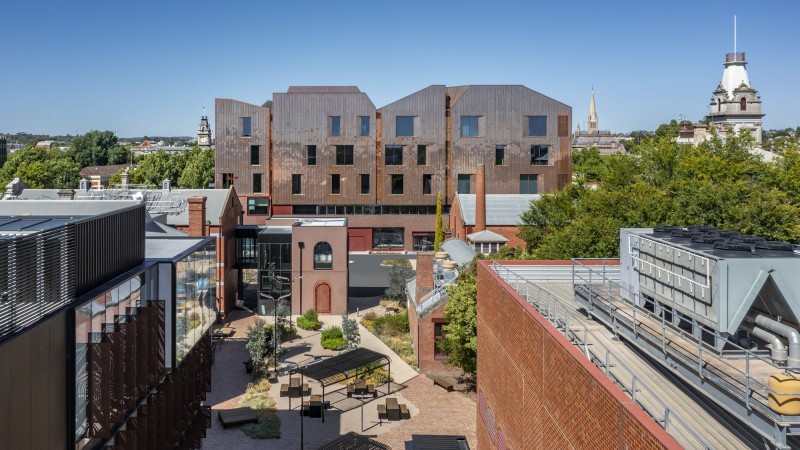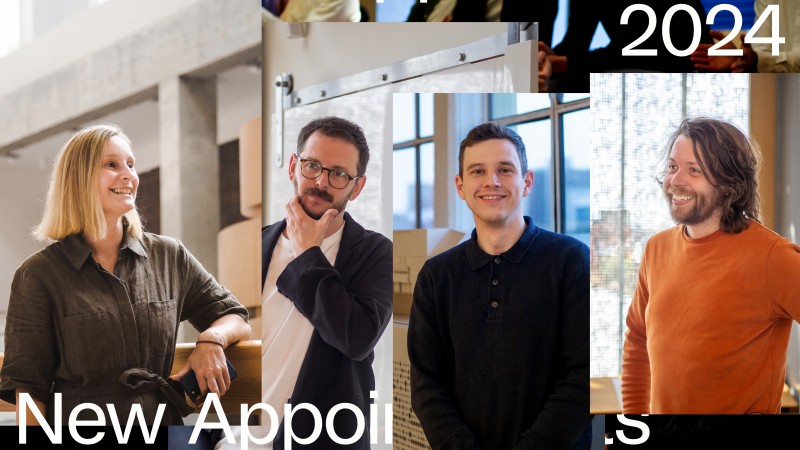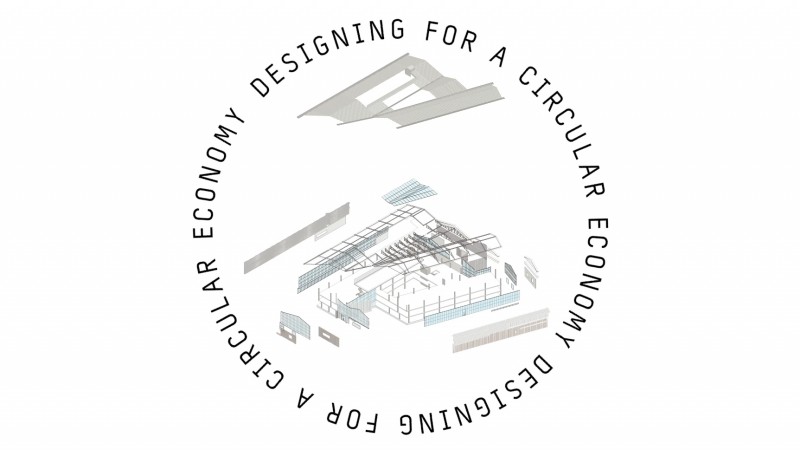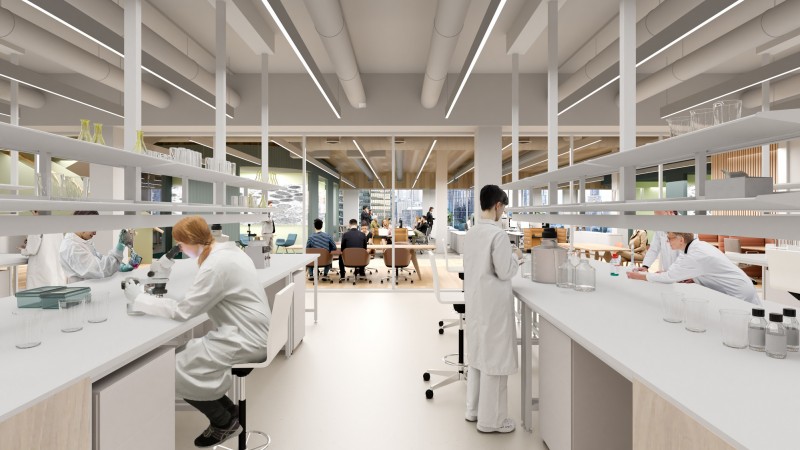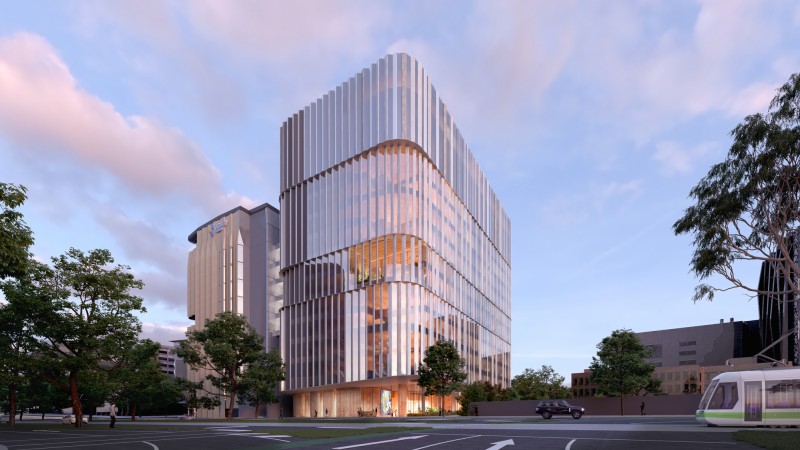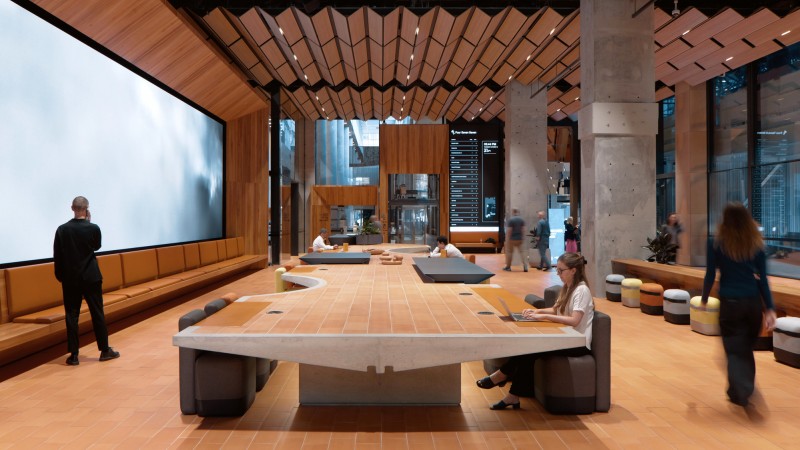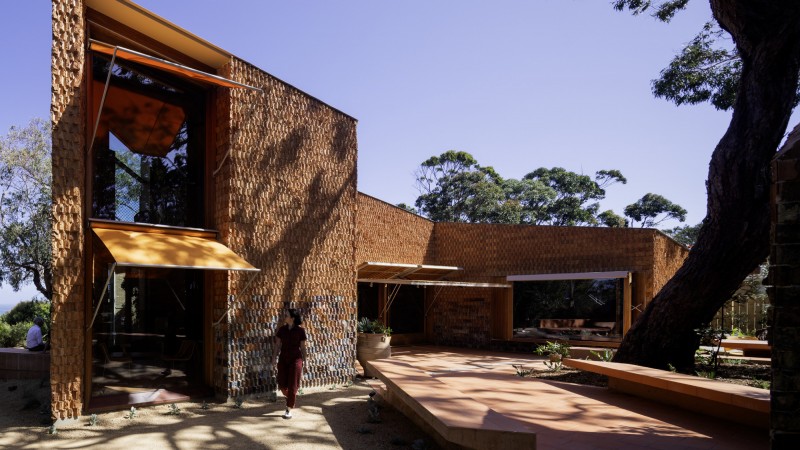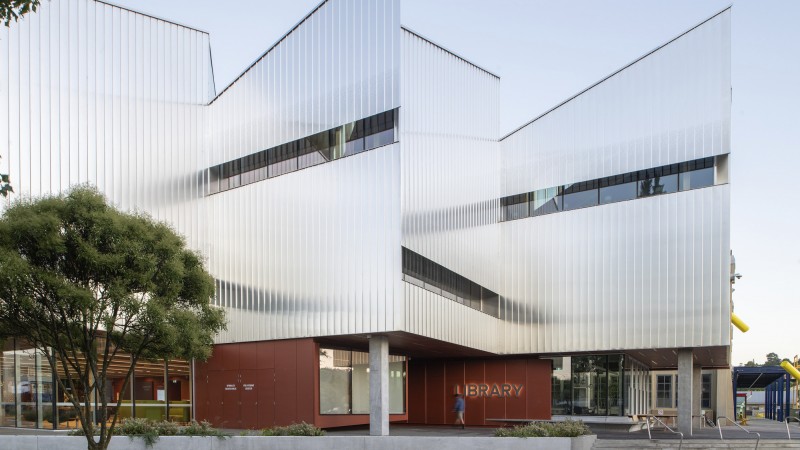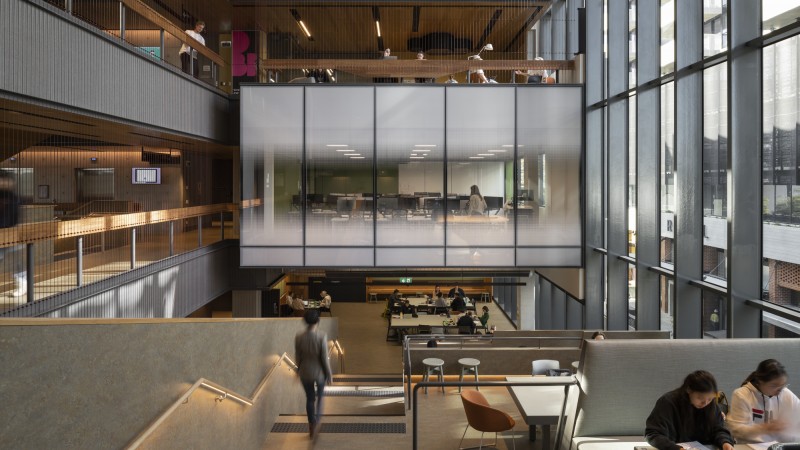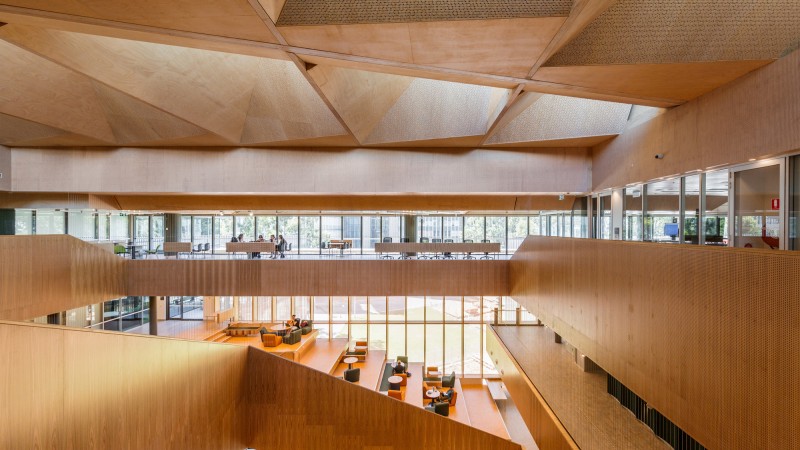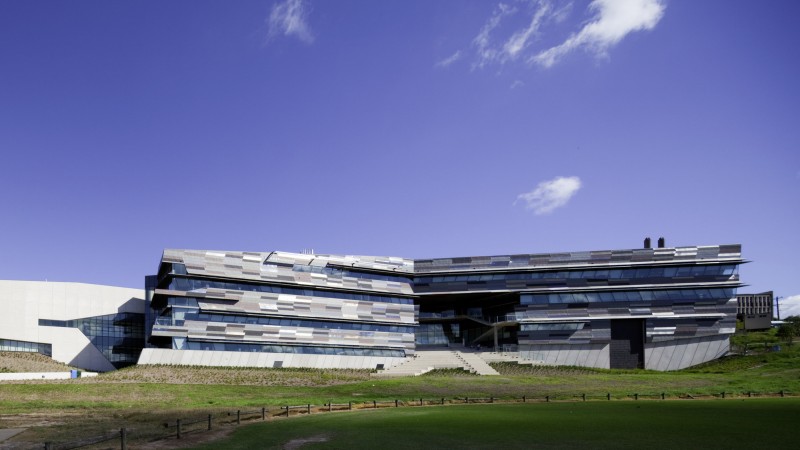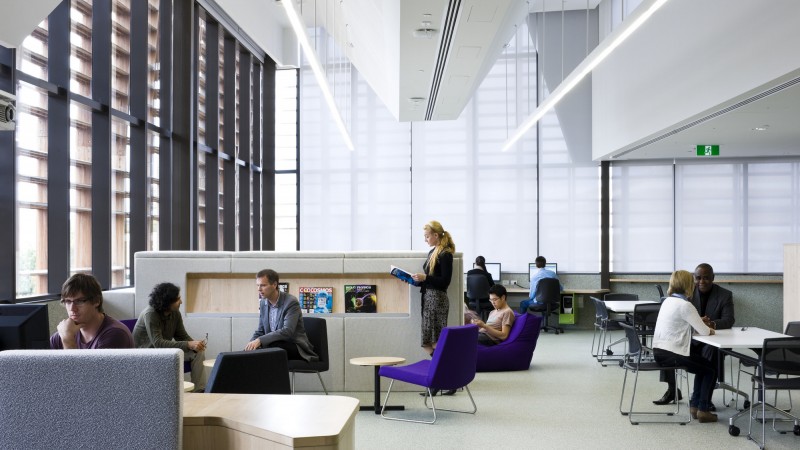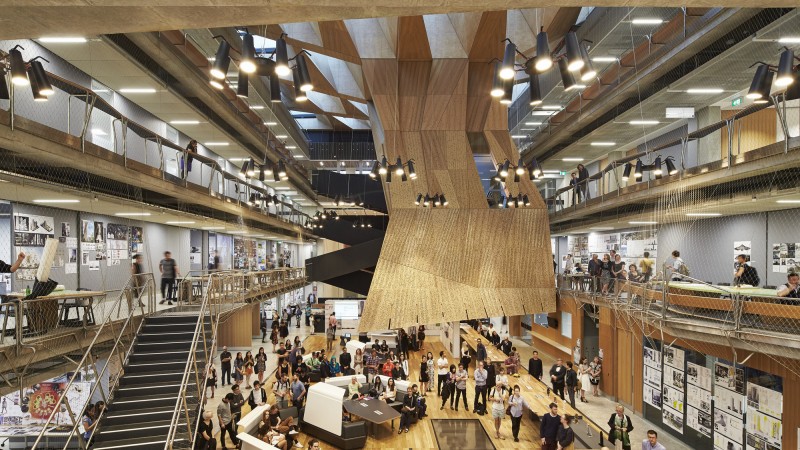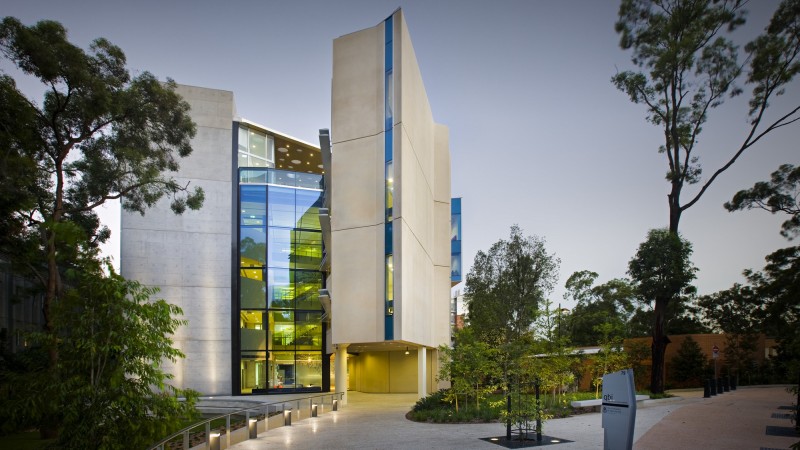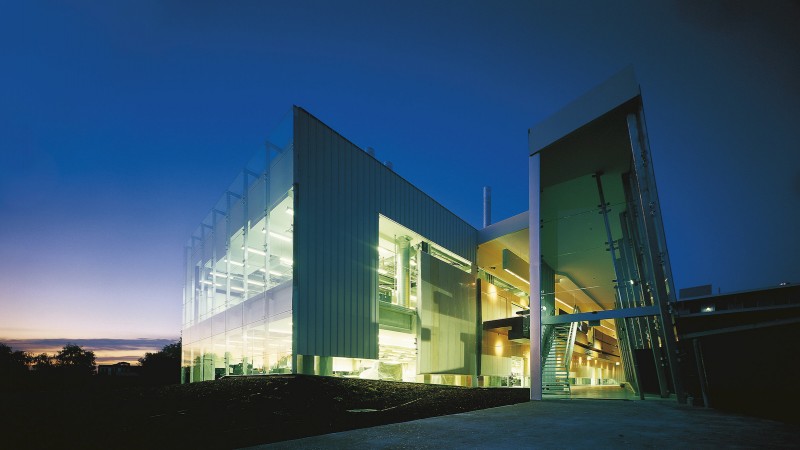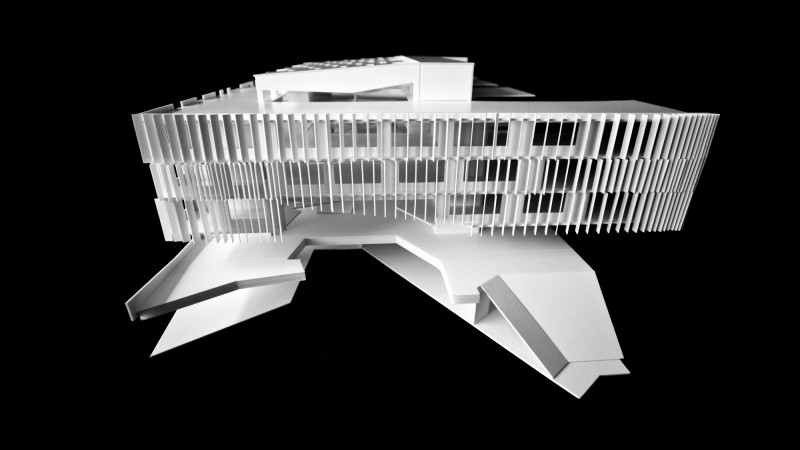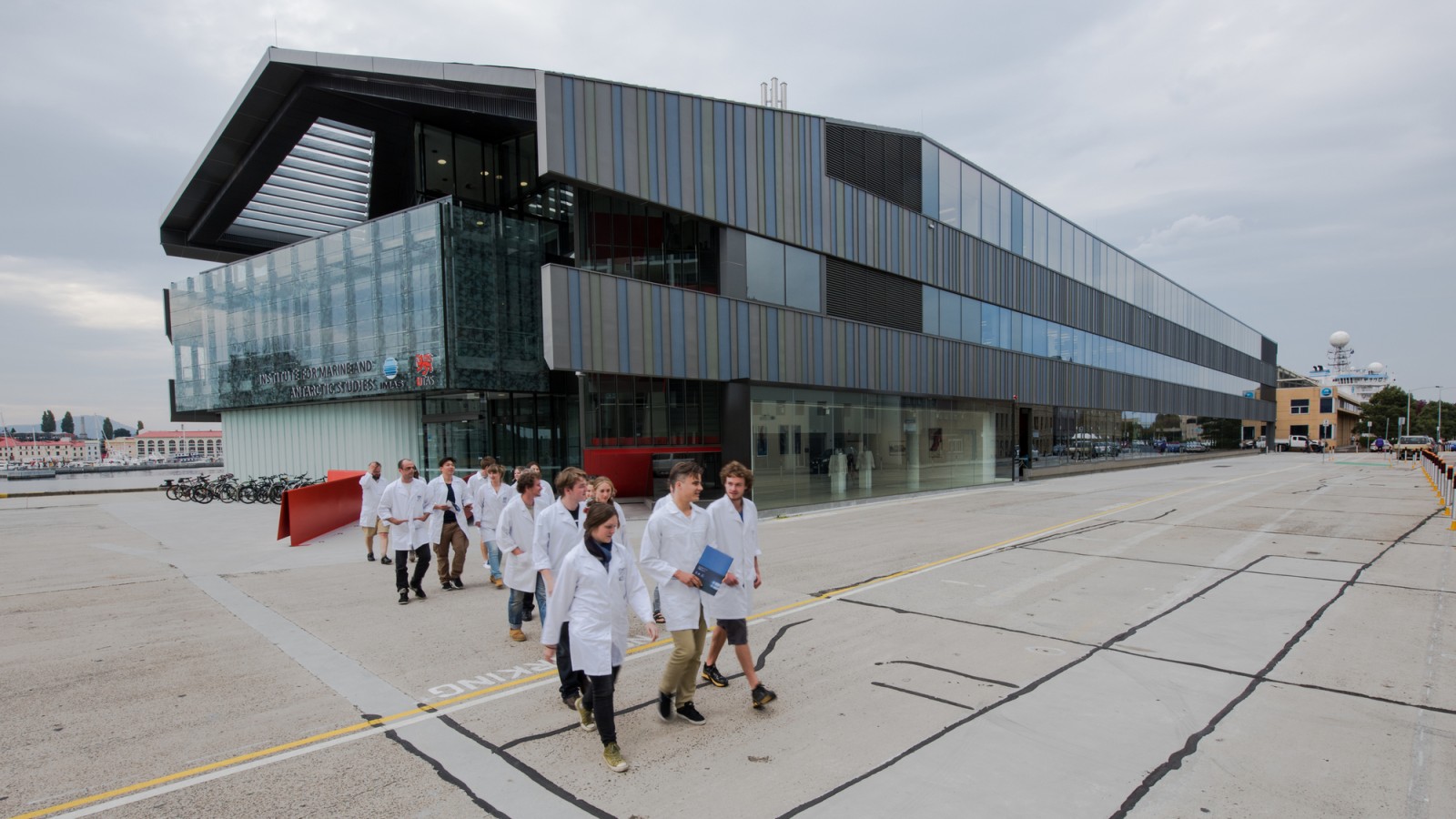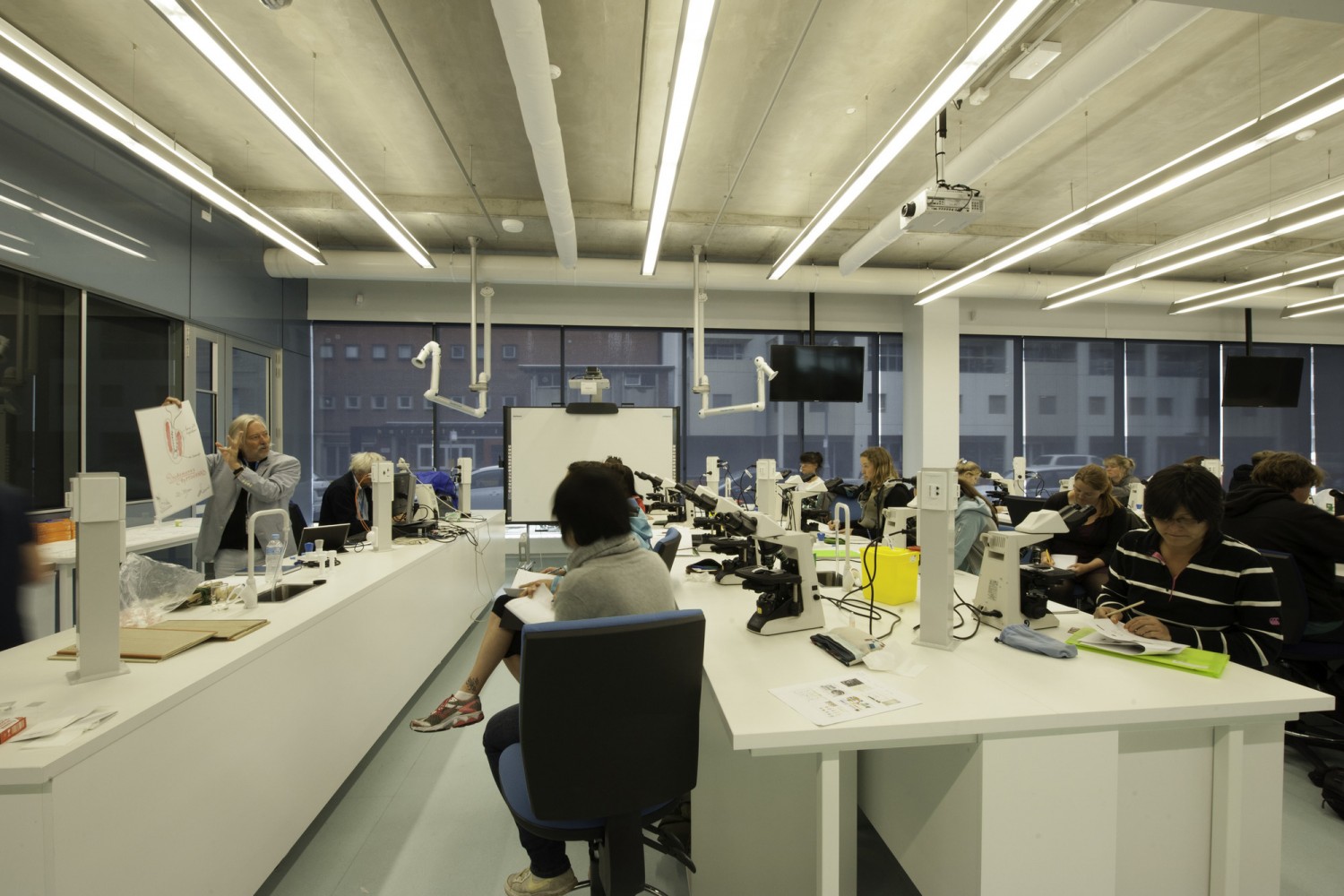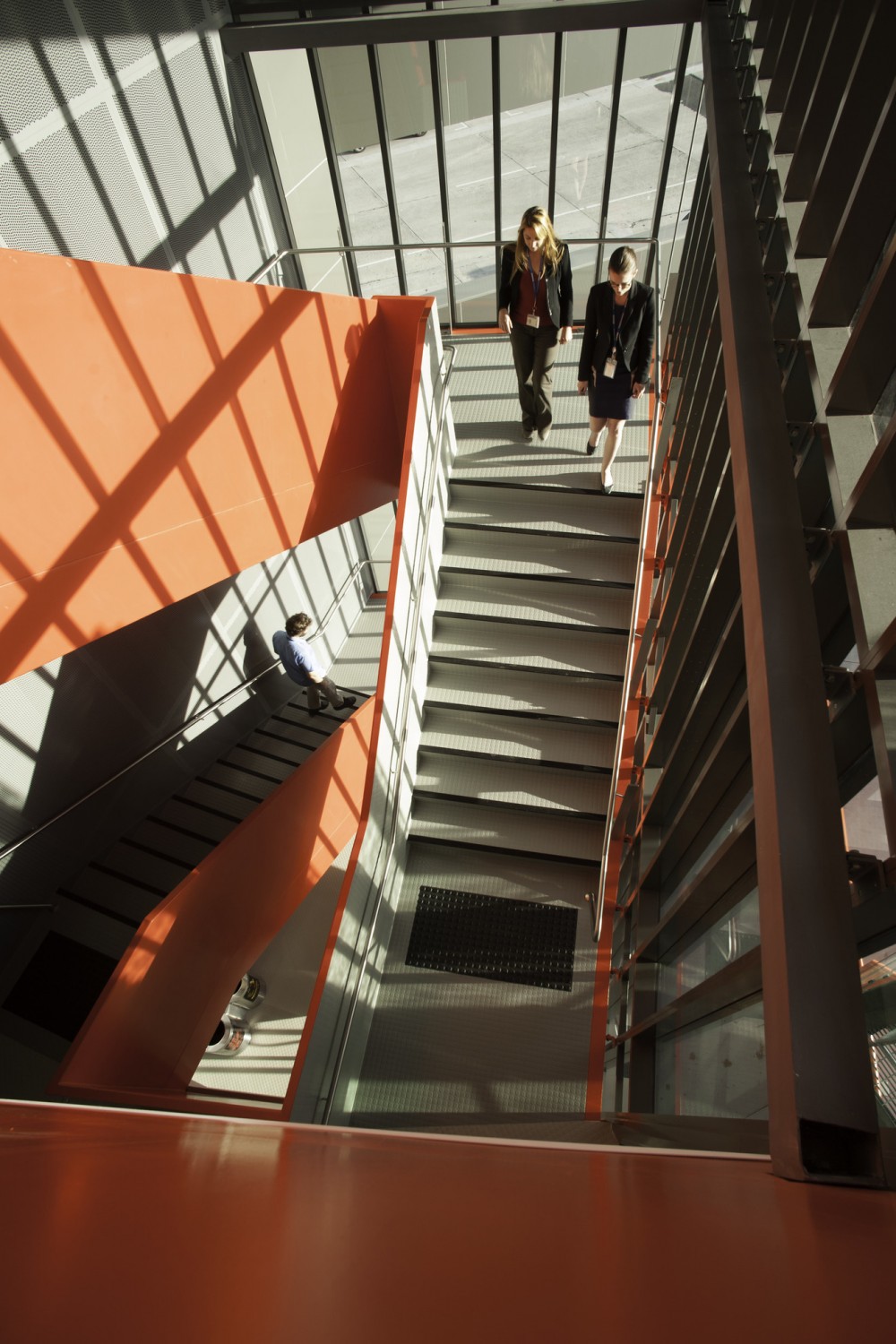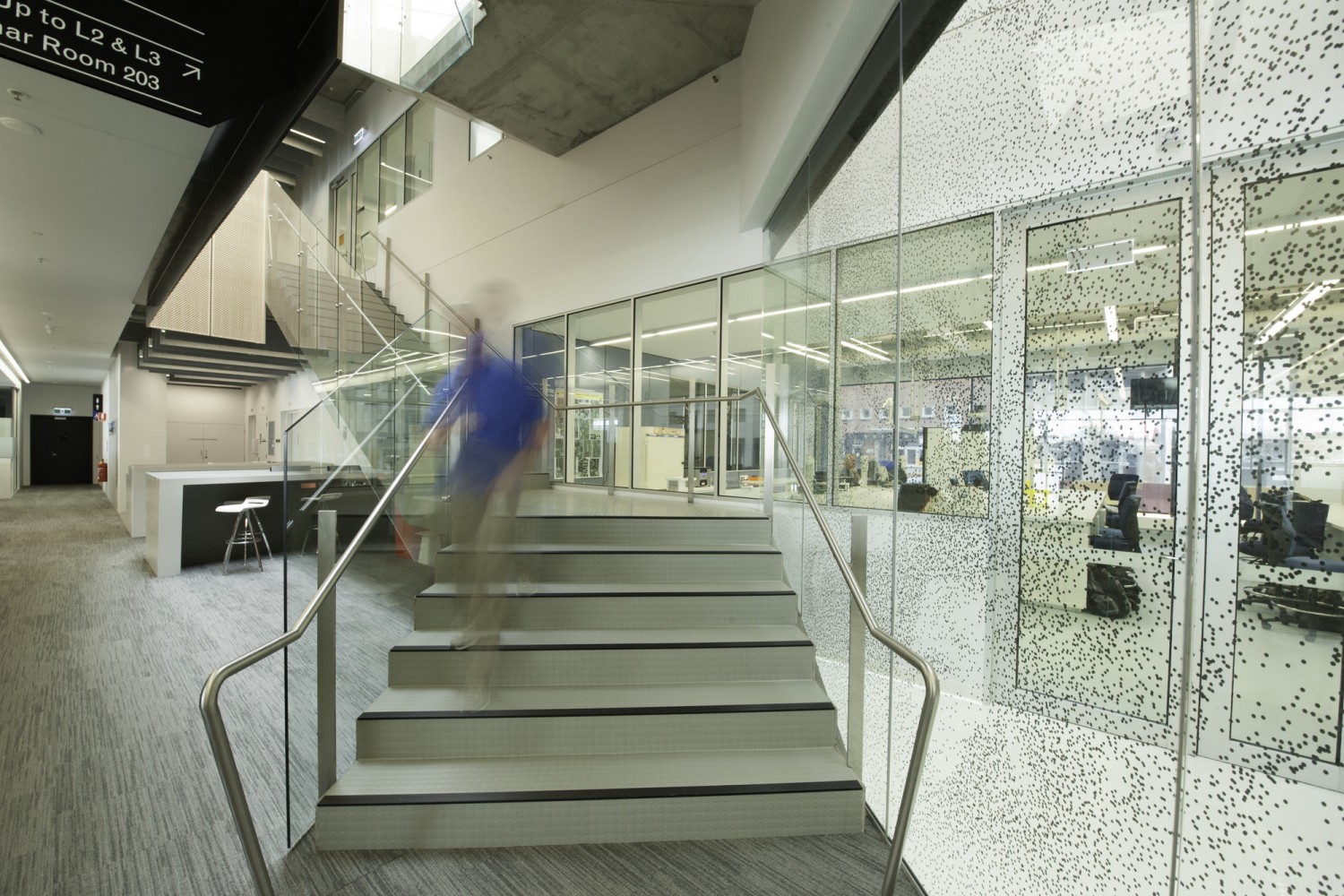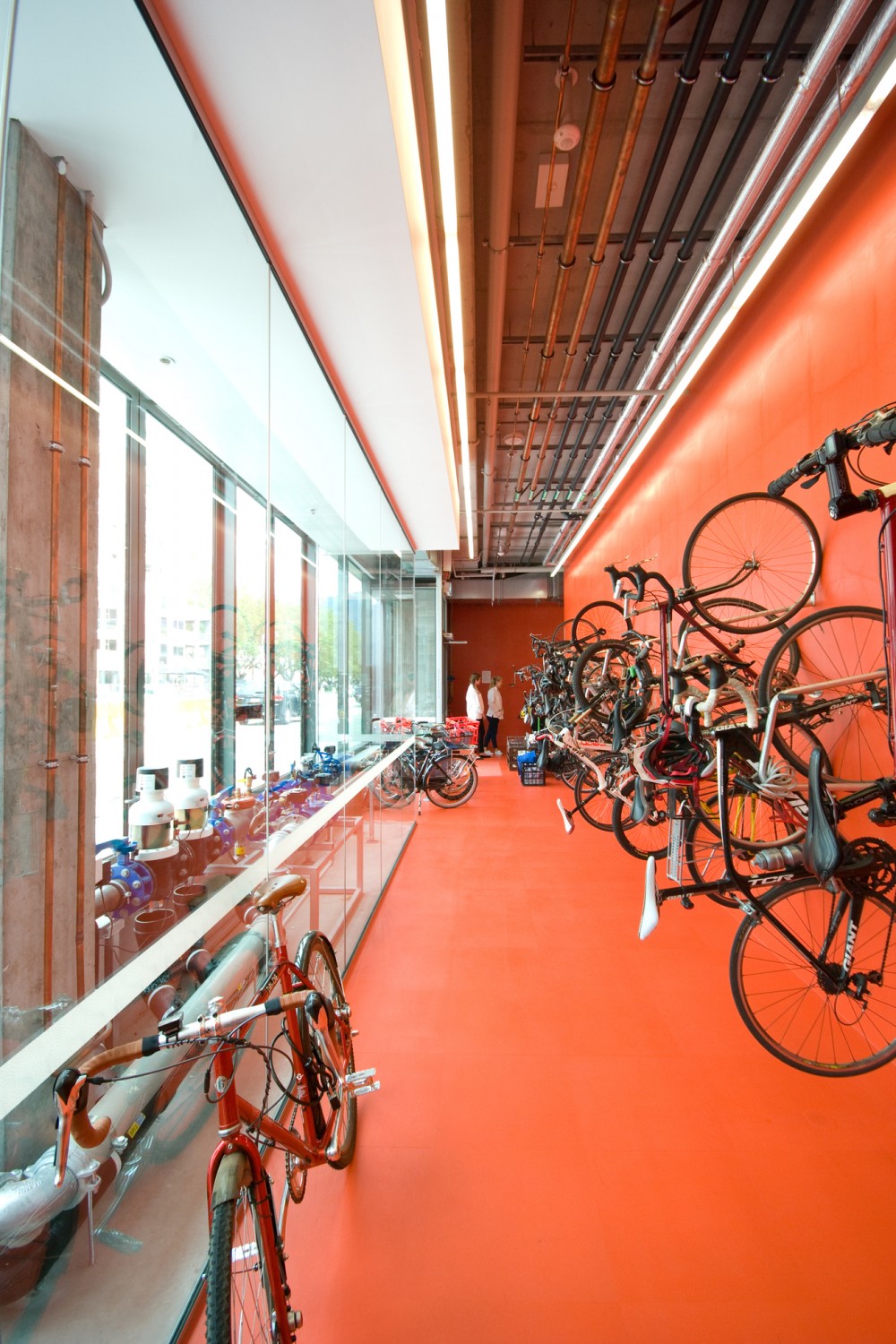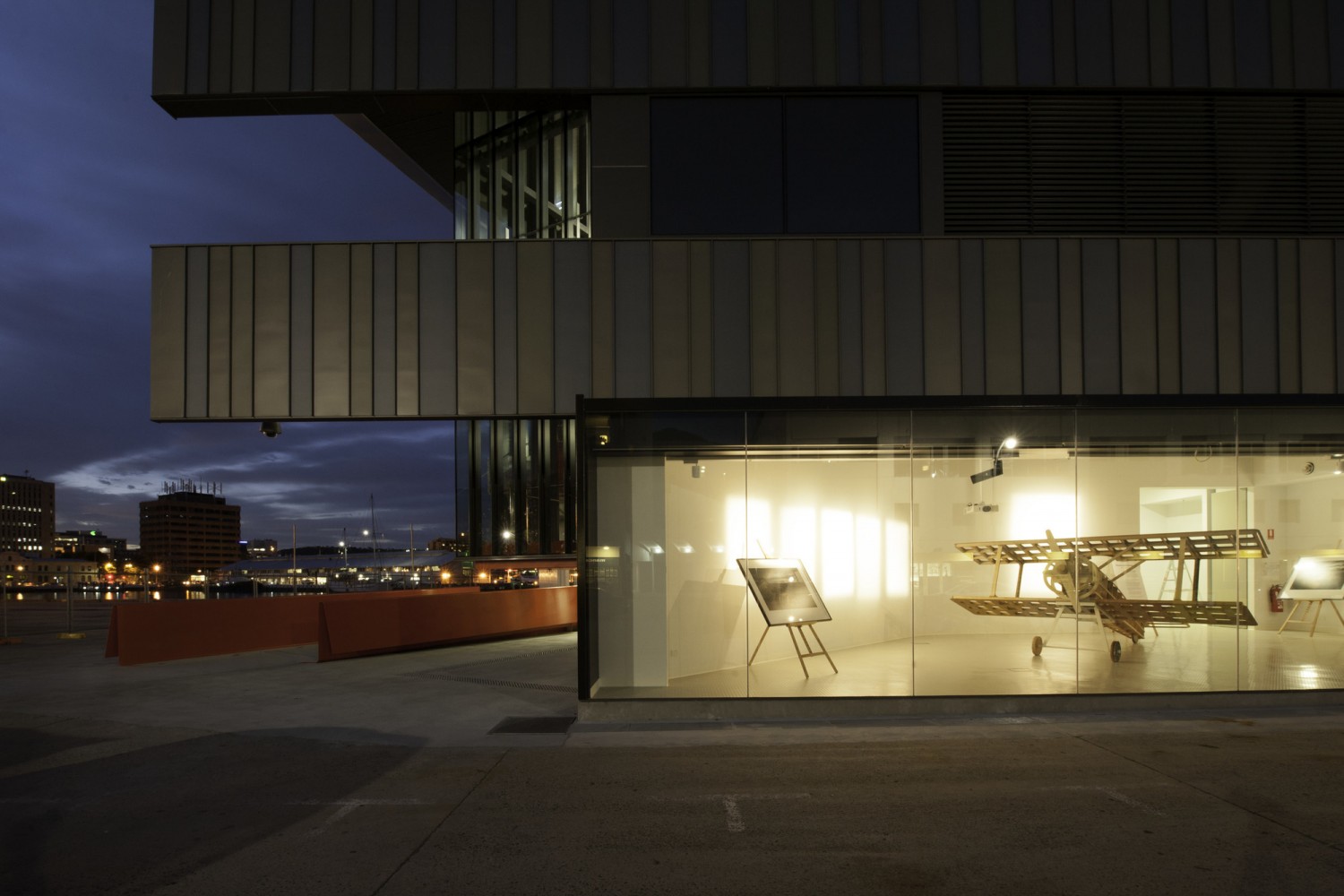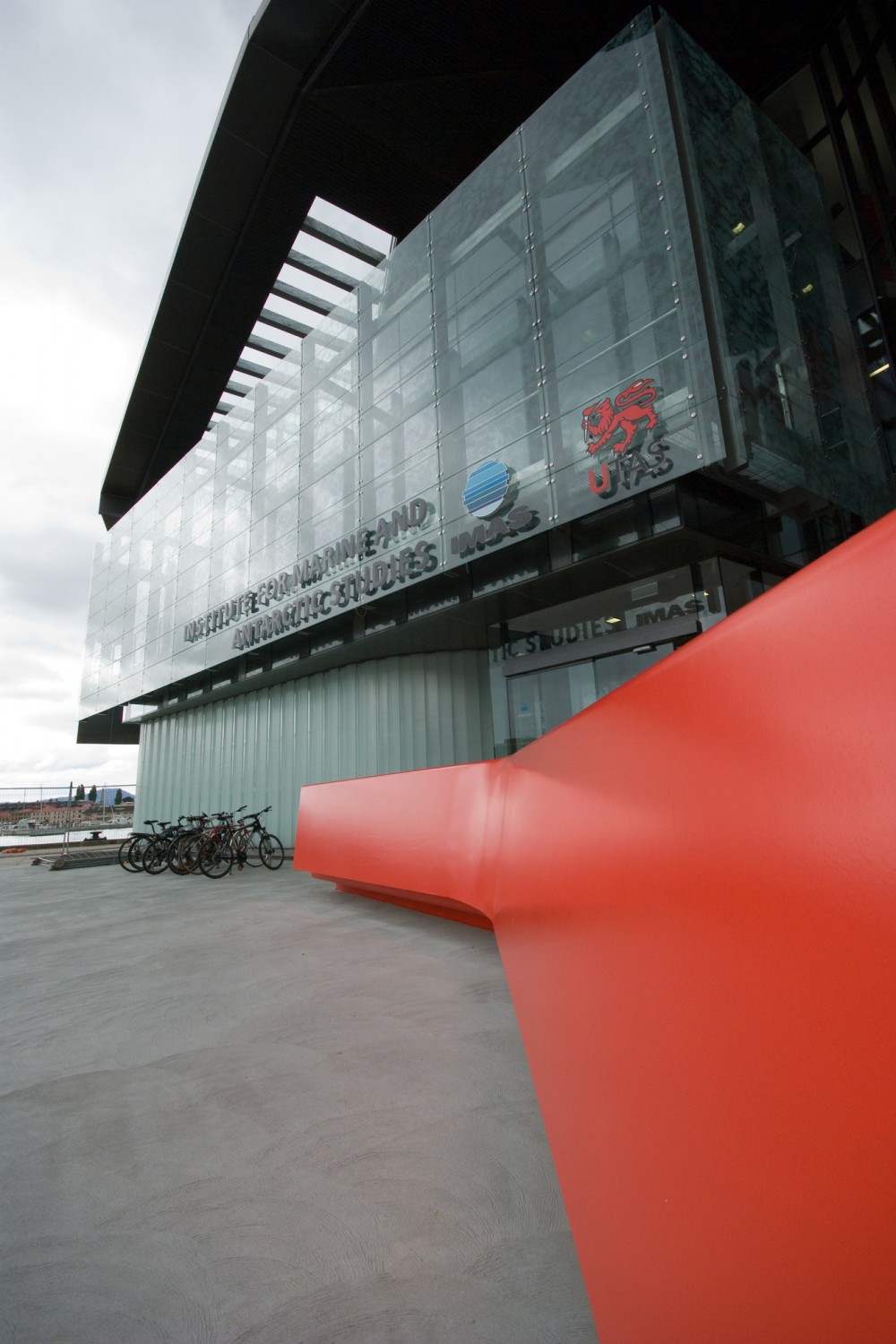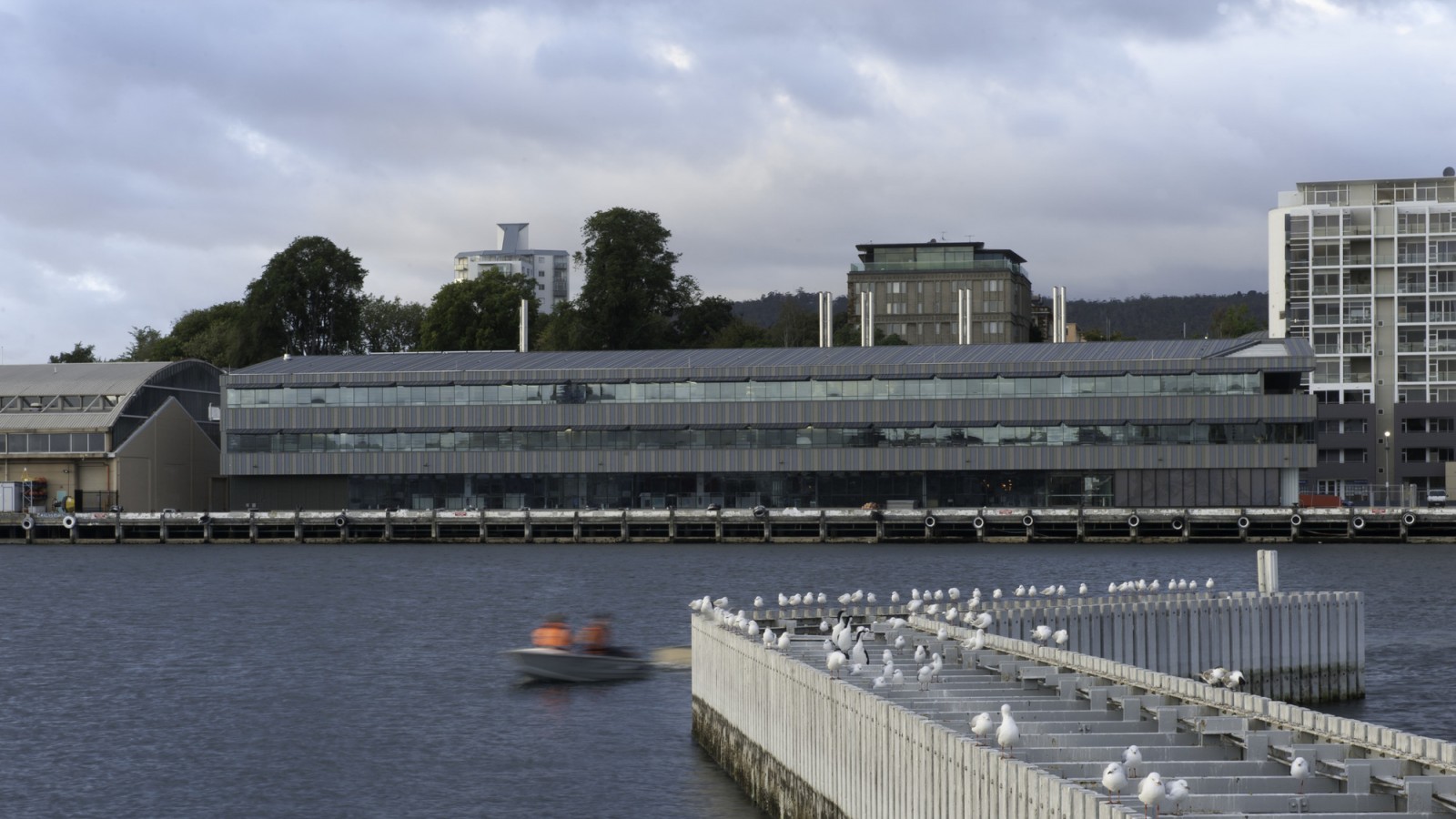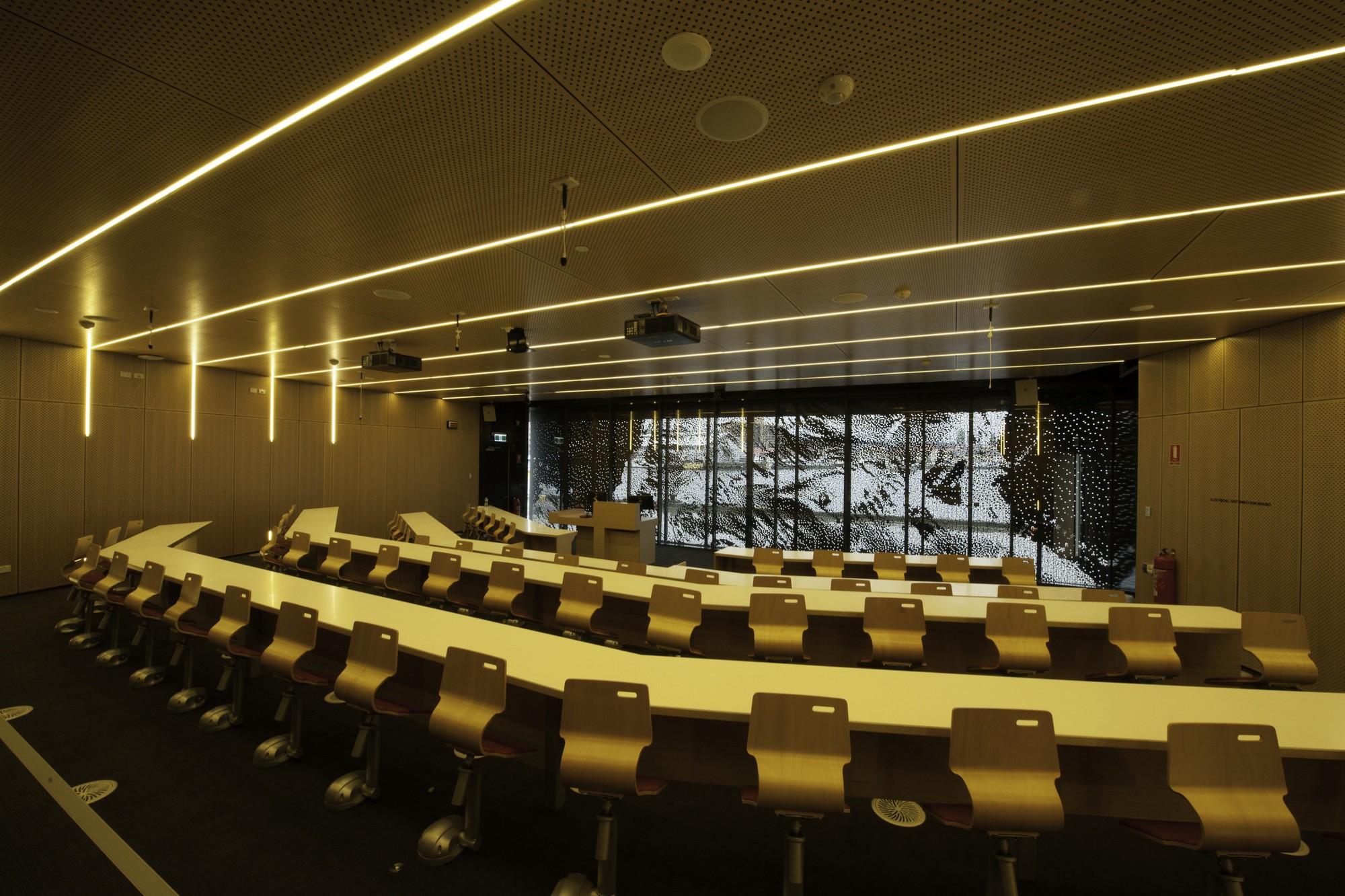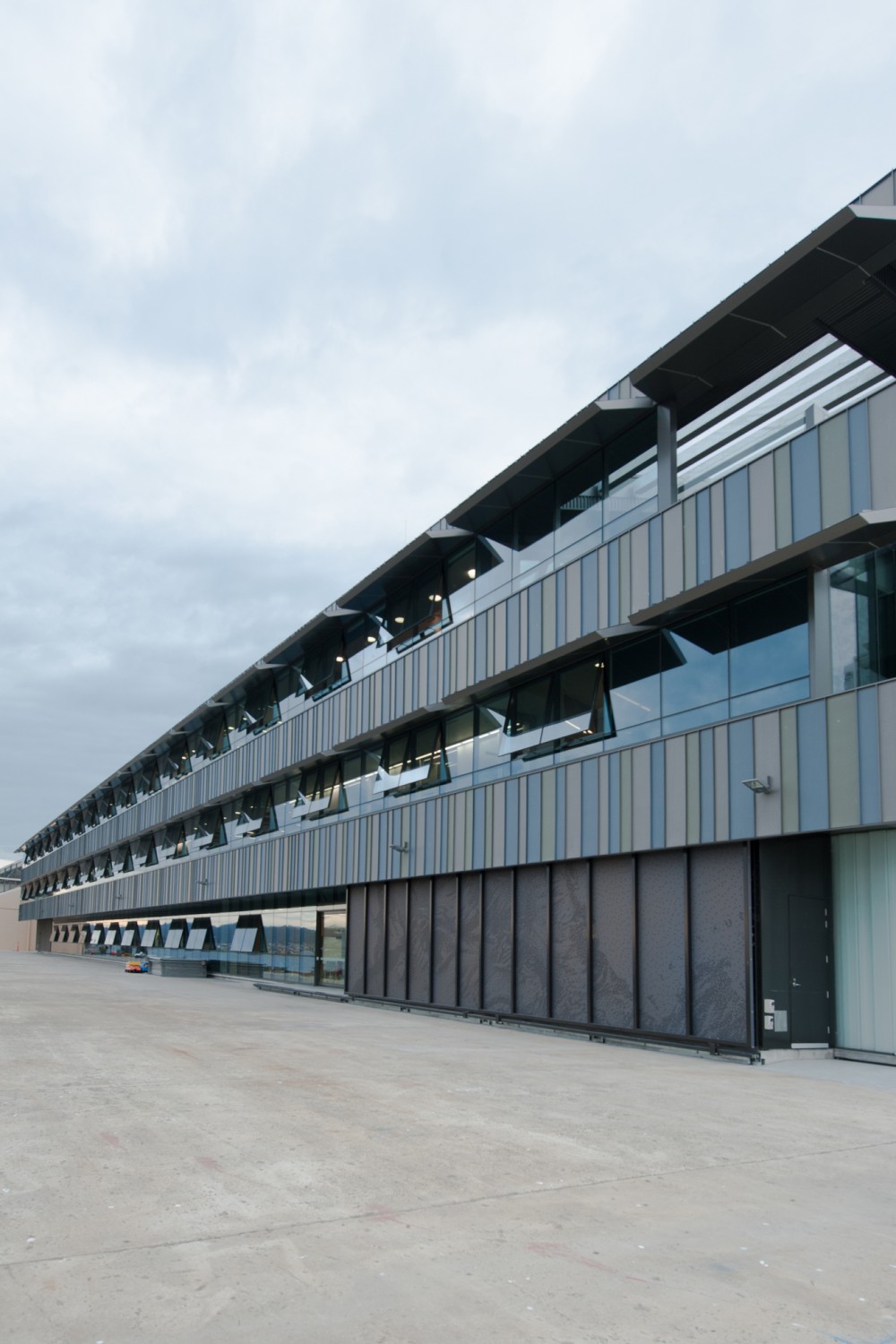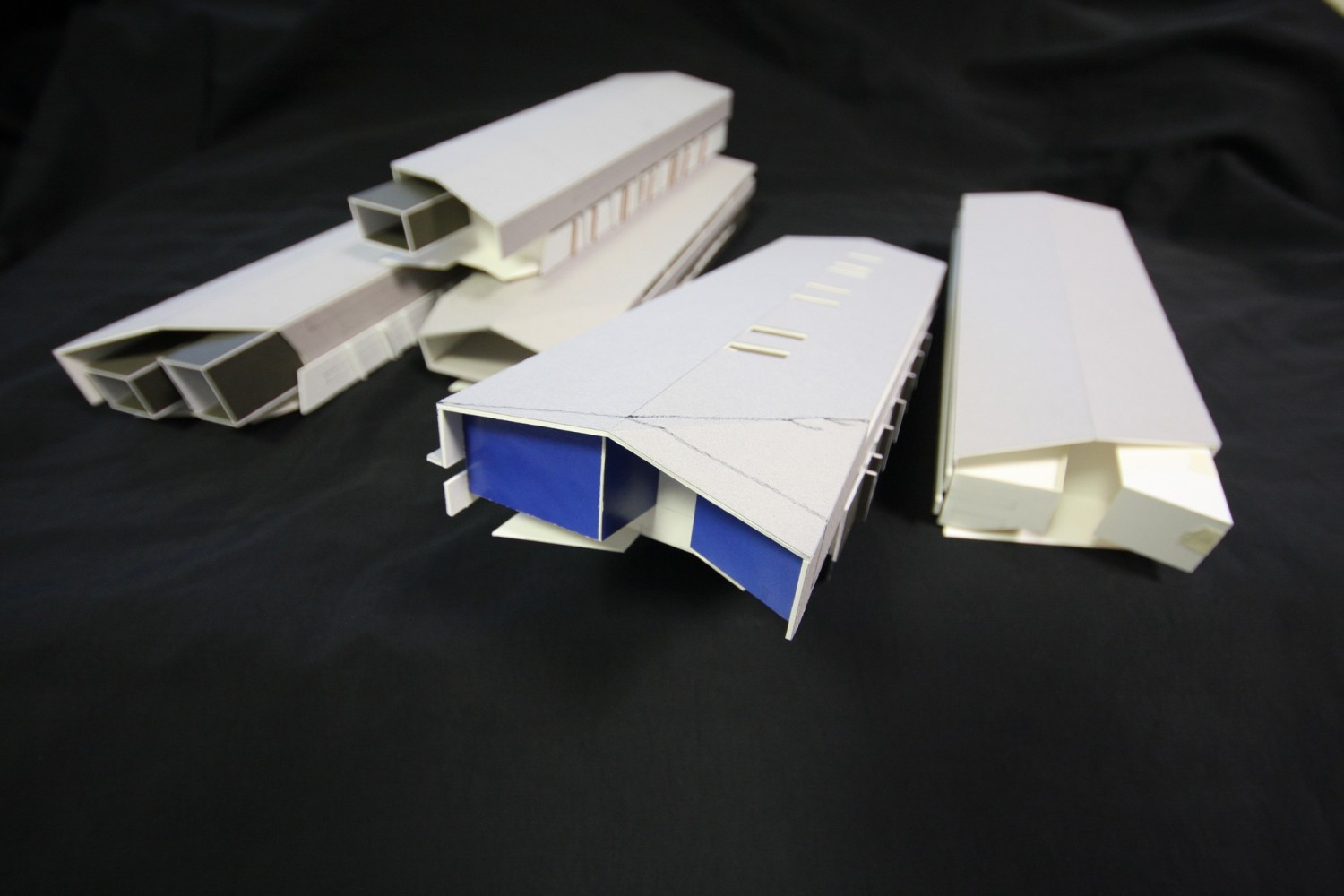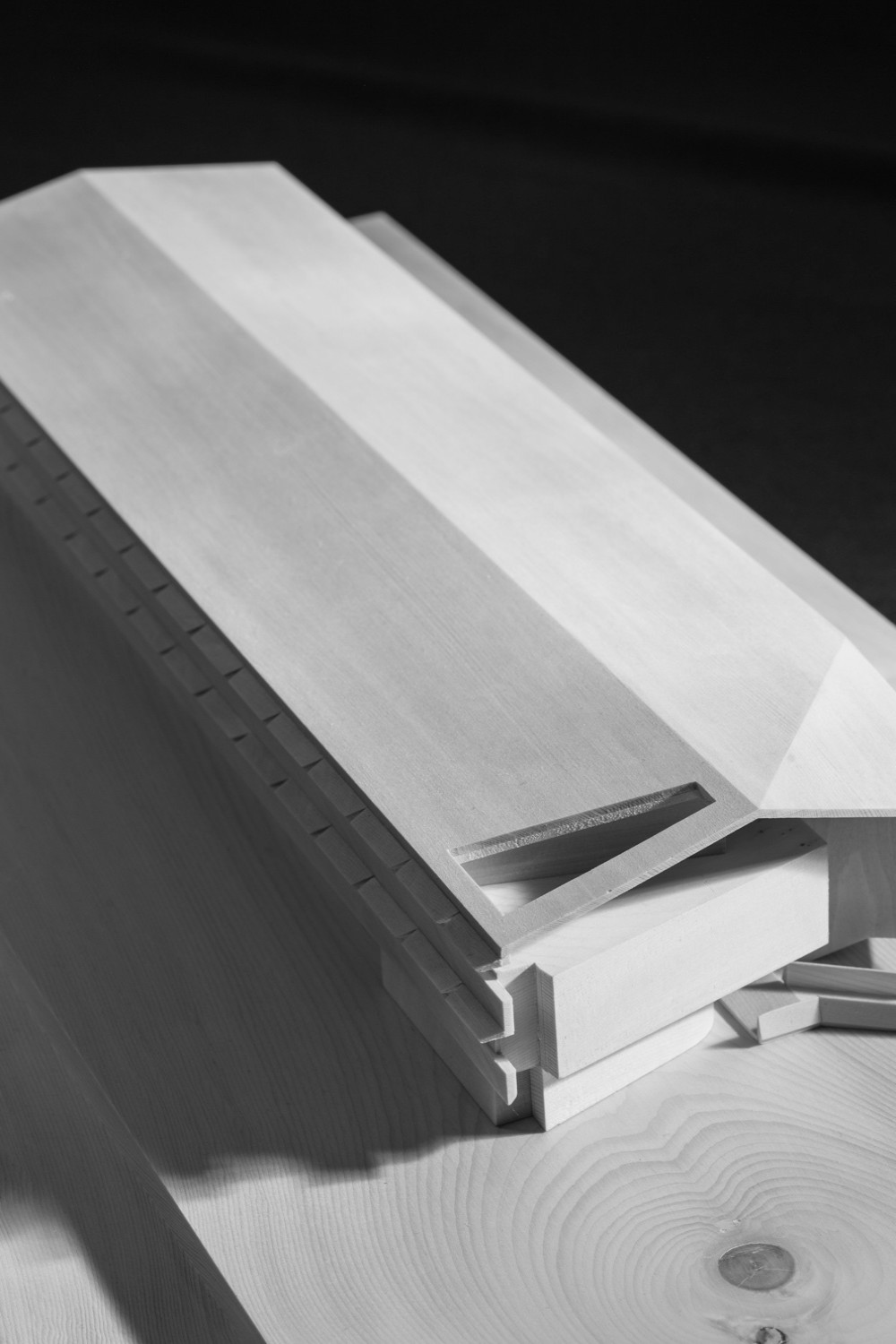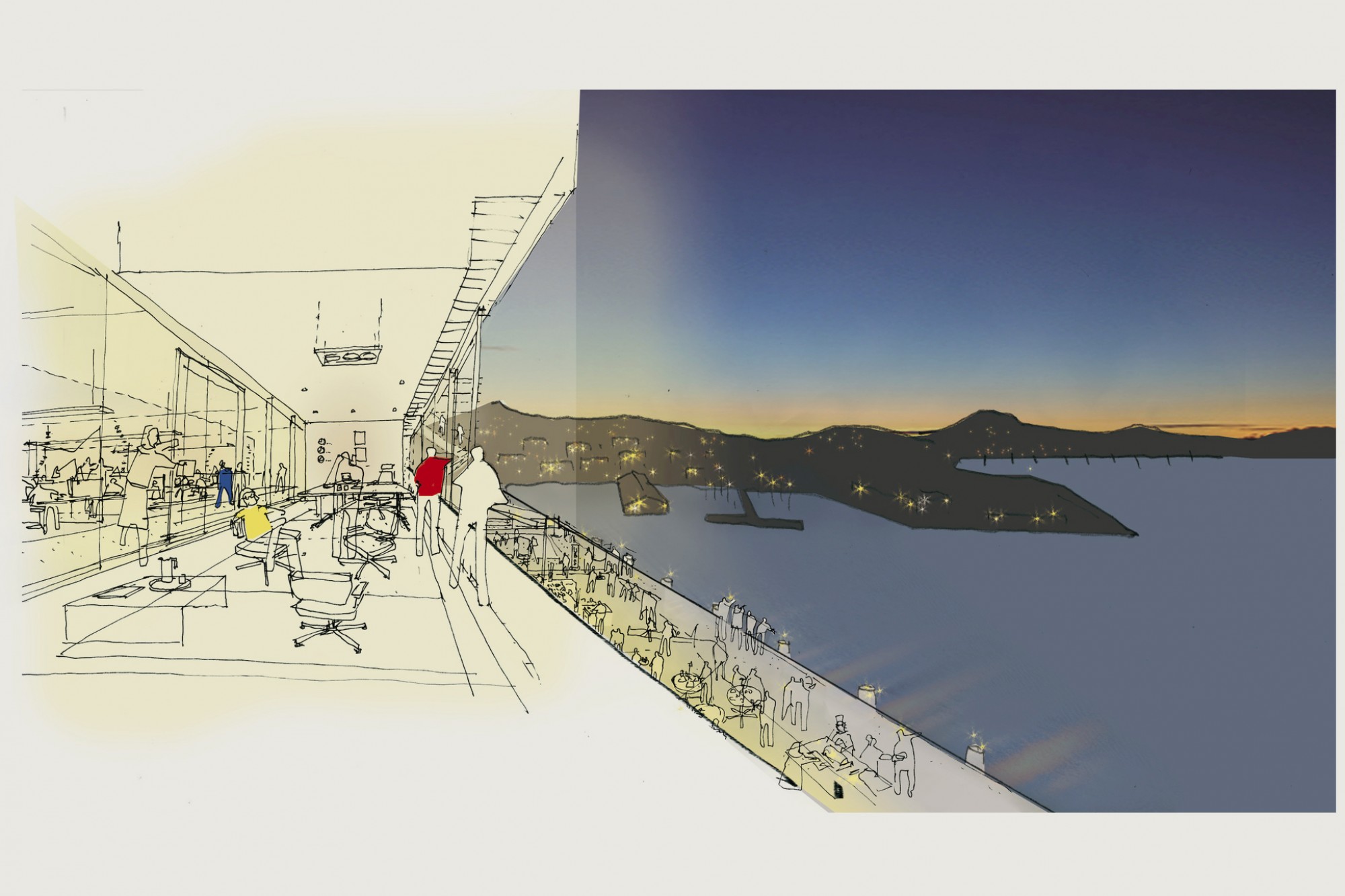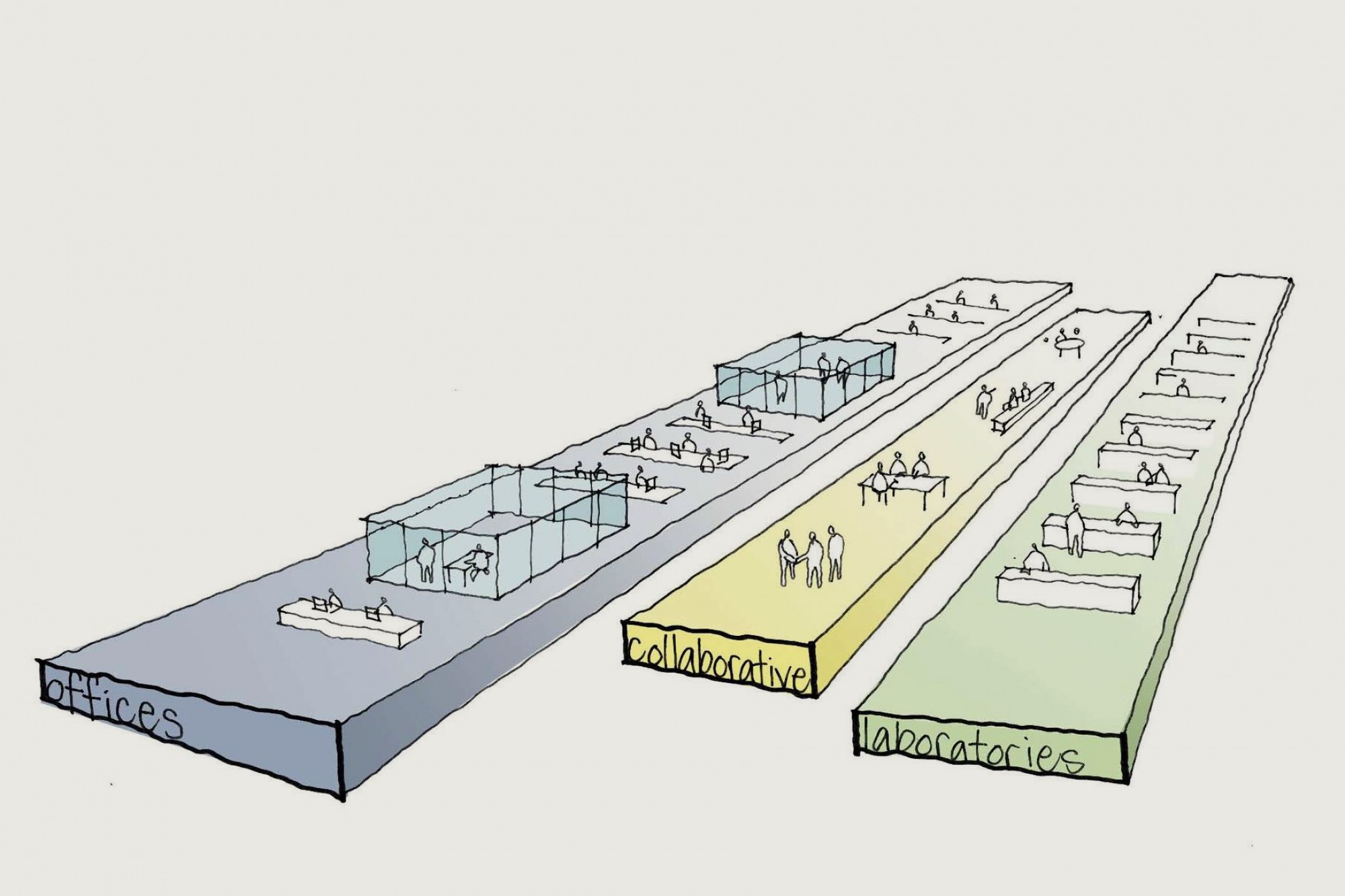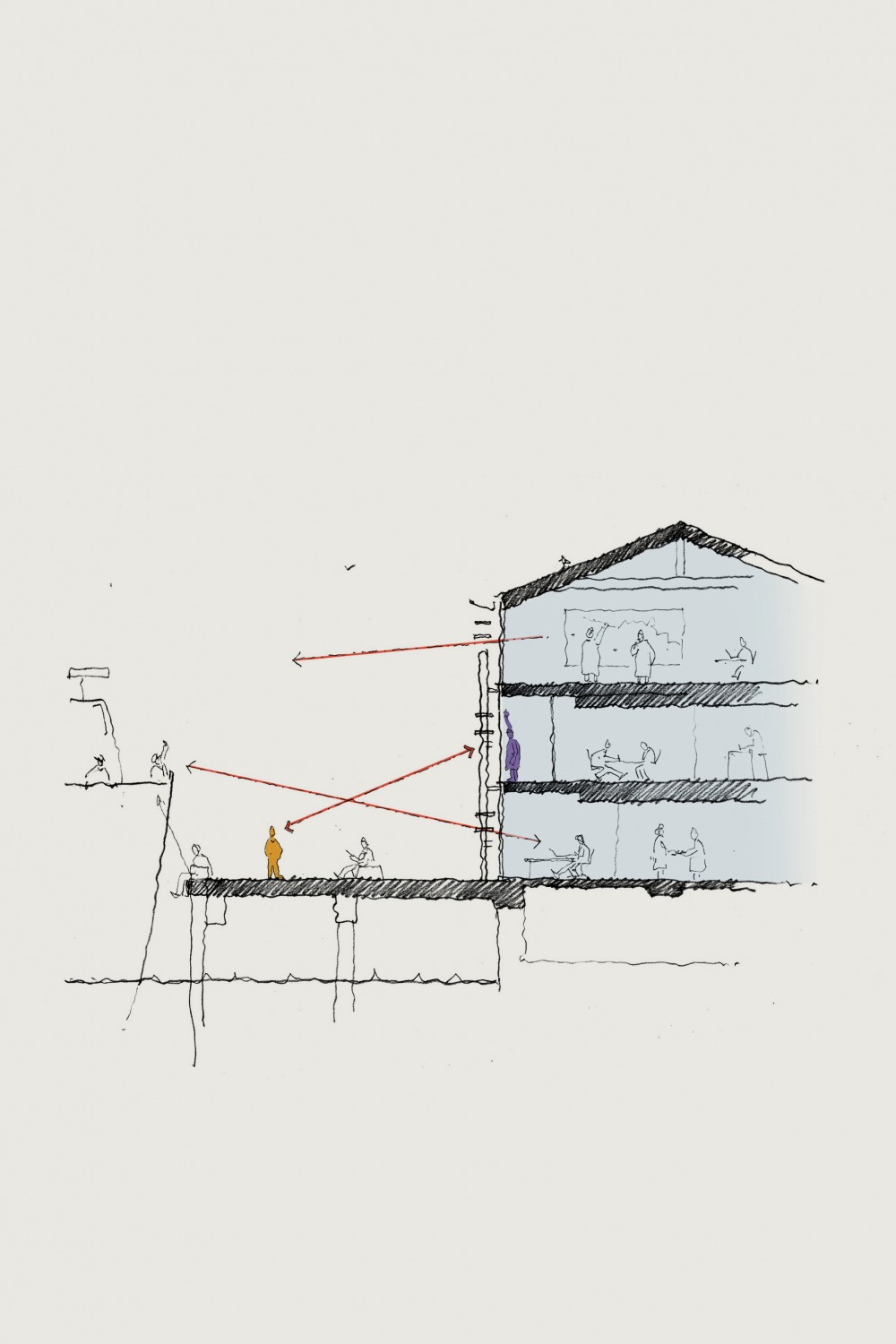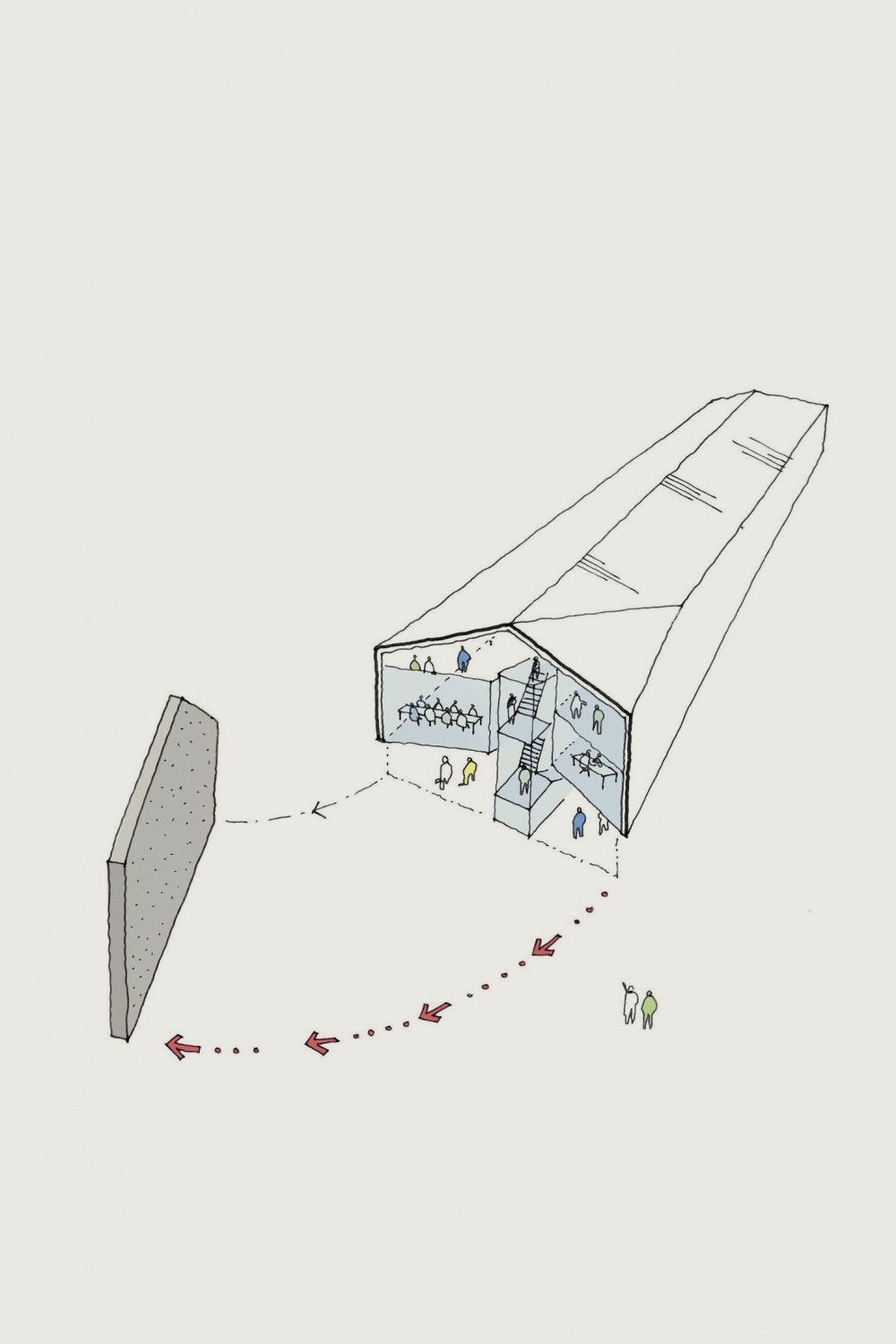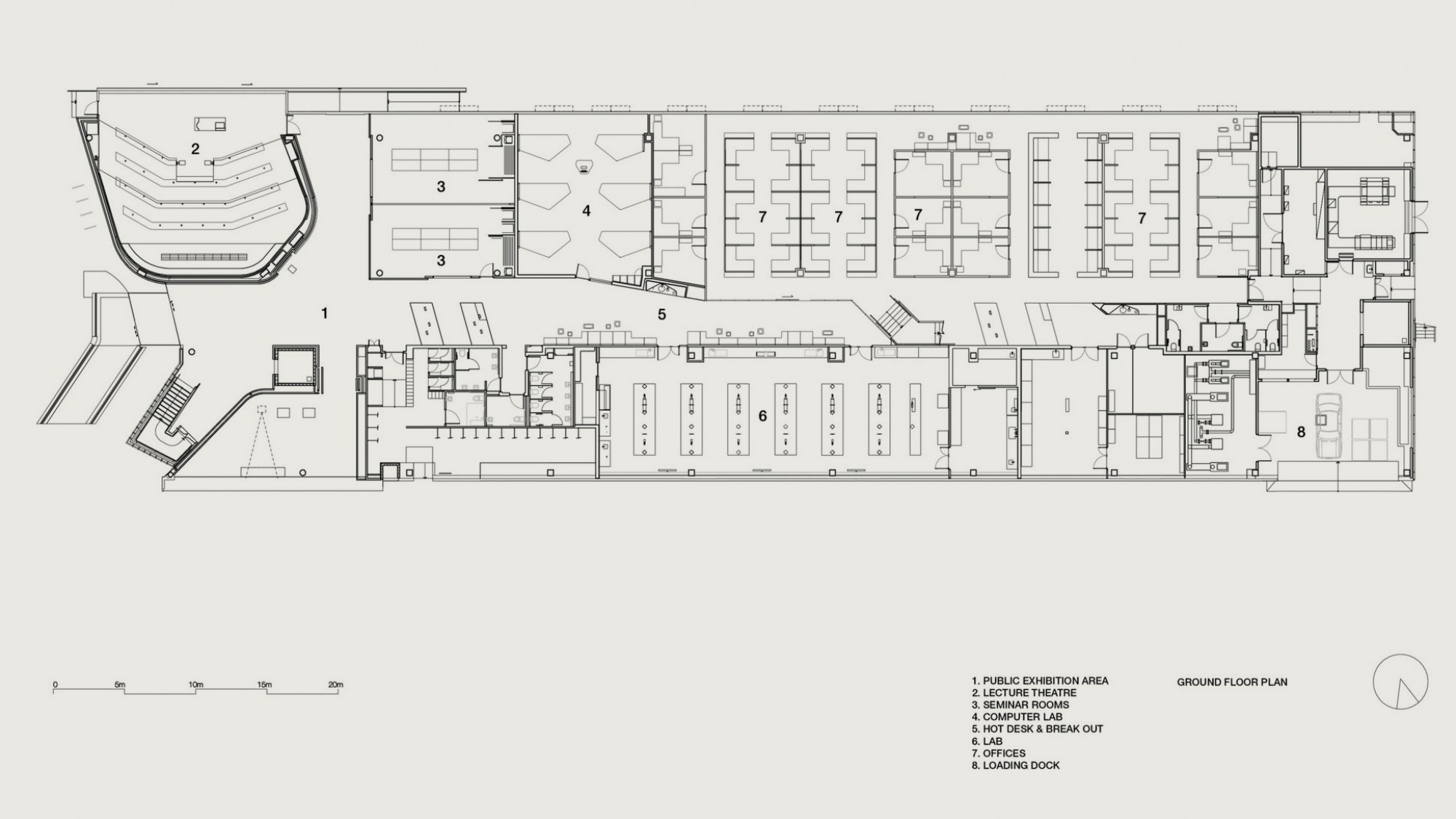This dynamic and international global research hub takes on a greater public role.
This institute brings together key scientific researchers from various leading institutions to collaborate on the Antarctic and Southern Oceans.
Located on Hobart’s heritage listed waterfront, aligned to the water’s edge and following the rhythm and scale of traditional wharf buildings, our central idea is putting the science into the shed.
Requiring carefully controlled laboratory environments as well as a series of offices and collaborative spaces, this building’s iconic shed-like form provides a simple contextually appropriate backdrop.
Placed directly onto the raw concrete edge of the cove floor, with close proximity to the water and passerby, this building has a strong public role. Continuing the almost rudimentary language of the wharf vernacular, it has been sliced open on the western edge to reveal the inner workings of the program and research activity.
As well as a series of three collaborative strands – laboratories, meetings and central and more informal collaboration zone - this building has an exhibition space and publicly accessible theatre.
A traditionally internal organisation opens up to its public domain.
